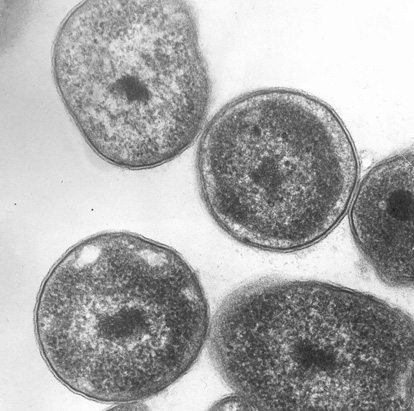Methylocella silvestris is an acidophilic aerobic methanotroph. It is unique in several ways compared to other methanotrophic bacteria. Whereas other methanotrophs are unable to grow on substrates containing carbon-carbon (C-C) bonds, and are therefore termed “obligate methanotrophs”, Methylocella is a catabolically flexible “facultative methanotroph”. Besides methane and methanol, it also grows on some multicarbon substrates such as acetate, ethanol, pyruvate, succinate, malate and propane. Methylocella is also unique in oxidizing methane via a soluble methane monooxygenase (sMMO) enzyme only. It lacks the particulate methane monooxygenase (pMMO) found in other aerobic methanotrophs, along with the extensive intracellular membrane system where pMMO is believed to be localized. The reason for the obligate nature of methanotrophy in all methanotrophs except Methylocella is a long-standing scientific mystery. Sequencing its complete genome will help elucidate the biochemistry and the genetic regulation of its facultative metabolism. Comparative genomics with two closely related bacteria: the obligate methanotroph Methylocapsa acidiphila and the non-methanotrophic chemoorganotroph Beijerinckia indica, should provide insight into the evolution of obligate methanotrophy, and into the metabolic tradeoffs required for a specialist obligately methanotrophic lifestyle compared to a generalist chemoorganotrophic lifestyle. |
||
|
||
Methylocella silvestris BL2, DSM 15510

